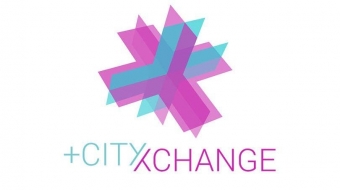Písek has joined a group of seven European cities that have successfully presented the ambitious + CityxChange project to the European Commission, which intends to decentralize power trade.
We will be able to co-create the world we wish to live in by combining vision with CityxChange. This entails, first and foremost, the development of a basic framework and supporting instruments for the development of a shared energy market backed by a linked community. This will result in recommendations for new energy regulations, market (de)regulation, and business models, such as allowing energy-positive communities to integrate e-Mobility as a service, for example (eMaaS). The + CityxChange project's goal is to build and extend Energy Positive Blocks and Districts (PEB / PED) in additional cities as part of Europe's clean energy transition.
The city of Písek plans to create energy-positive blocks and communities, which will include the town hall, a newly constructed parking garage, and some primary or kindergarten buildings. The town hall is situated in a historically significant region. In the larger center, you'll find the parking garage and a few schools. Thanks to assured energy savings (EPC) projects, the town hall and school building have been restored in recent years. The parking garage is currently under construction. Data is being gathered in order to construct an energy-positive ecosystem of blocks and neighborhoods. The principal law controlling energy trading (abbreviated as the Energy Act) is undergoing revisions at the moment. Peer-to-peer energy trading, for example, is expected in the next iteration.
Activities
- Feasibility study and city model
Energy Positive Blocks and Districts (PEB / PED) are the key concepts of the + CxC project. The city of Písek is a project following city, and no investment dollars have been given to the project. Nonetheless, by joining the project, the municipality of Písek committed to working toward the creation of such communities. Materials were collected and project partners contributed to the creation of a virtual model of the city in the first year of the project, which can be used to simulate various scenarios in the field of energy in buildings and neighborhoods (penetration of electromobility, deployment of photovoltaic panels, etc.) The feasibility study should primarily provide information on how and under what conditions it is technically viable to achieve "energy positive" in a certain area of the city. - Bold City Vision
Bold City Vision, One of the primary products of the + CxC initiative is Bold City Vision. The goal of this document is to lay out the options for the city's development until 2050, particularly in terms of energy balance. By the end of 2020, this vision should be defined. - Citizen engagement
The participation of as many people as possible in the construction of PEB / PED is an important aspect of the + CxC project. A number of activities aimed at citizens, local government authorities, and key commercial entities in the region are planned as part of the initiative. - Feasibility study of Energy Positive Blocks
The city of Písek owns and operates about 200 structures, and has always taken an active role in energy management in major and energy-intensive buildings, including as schools, cultural centers, and sports facilities. EPC projects are being executed in a total of 21 city buildings, and the city is also developing conceptual energy management solutions in terms of manpower and technology (implementation of energy management system and ISO 50001 certification). As part of these efforts, the city actively encourages citizens to participate in conversations about energy management, energy savings, and other related topics, and has developed a public energy portal. The data from the Internet of Things pilot project, which measured water consumption, was added to the energy site in 2018. The goal of this research is to create and assess energy measures in a number of city-owned buildings in order to achieve energy positive in the complex (virtual block). The total positive yearly energy balance, i.e. the generation of more energy than is consumed in a building per year, is referred to as energy positivity. This is accomplished through cost-cutting initiatives as well as the installation of renewable energy sources and, for example, modifications in heating methods.
More information can be found here: https://cityxchange.eu/
